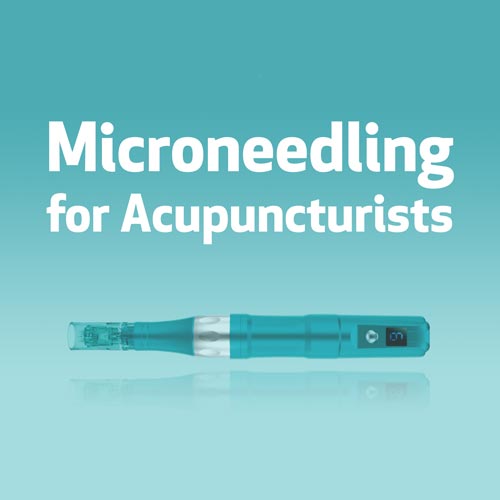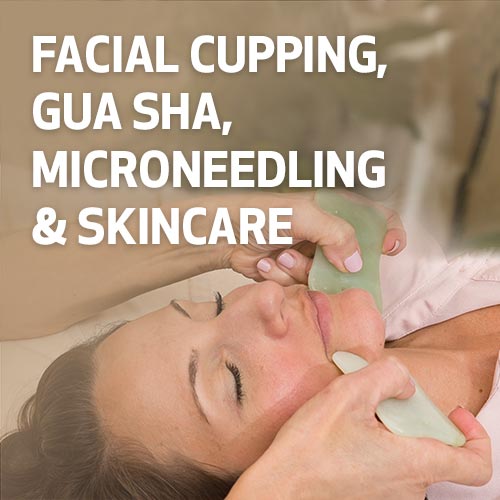Micro-Needle Dermal Roller Use in the Treatment Room
Recently micro-needle dermal rollers have been getting a lot of media attention. As a practitioner who specializes in acupuncture facial rejuvenation, I know that skin needling with a dermal roller (also known as collagen induction therapy), promotes the natural reproduction of collagen and elastin, making the skin feel smoother and tighter.
Micro-needle dermal rollers have additional applications in the treatment room. They can be used to infuse homeopathic remedies into the skin, and they can be used in place of a channel barrel roller to stimulate meridians. For certain applications, a dermal roller can even replace a seven-star plum blossom.
Typically, my facial acupuncture patients come to see me once a week until they have achieved desired results and then spread their treatments out to once a month for maintenance. At home use of a dermal roller between treatments enables them to accelerate their results and to also work on areas, not limited to the face. The micro-needle device I work with has 540, 1.0mm or .5mm needles on the roller instead of the 172 needles found on most commercially available devices. Specially designed body rollers with 1080 1.0mm or 1.5mm needles can also be used to increase skin thickness and reduce the signs of cellulite, stretch marks and acne scars on the legs, back, abdomen and arms.
The way skin needling works to rejuvenate the skin is by stimulating the body's wound healing mechanisms. As the micro-needles penetrate the skin causing micro-wounds, it triggers an intense inflammatory reaction that begins a cascade of subsequent reactions. Once an area is treated, thousands of micro-wounds are created in the treatment area. Many cell types including new fibroblasts rush to close the wound by migrating to the point of intrusion. Fibroblasts are the cells that synthesize collagen protein, which integrate with existing collagen in the upper dermis. As each wound induces new collagen formation, it forms a new, healthy collagen layer in the treatment area. This reaction is called collagenesis. The wound healing process also stimulates rapid growth of endothelial cells (the thin layer of cells which line capillaries and blood vessels). In turn, this creates new capillaries for better blood supply to the skin itself. This reaction is called angiogenesis. Collagen increases gradually, which adds thickness and firmness to the skin, reduces stretch marks and fills in atrophic (depressed) scars, such as acne scars, and stretch marks. Once the collagen has formed, the body can then produce more elastin, lending to better elasticity which can mean less sagging in places where even plastic surgery is not typically performed such as saggy elbows, hands or knees.

When using a dermal roller permanent damage to the skin is unlikely because the needles are very thin in diameter (.25mm, Japanese 5 gauge), much like an acupuncture needle. The integrity of the epidermis remains intact even though the skin reacts as if it had been "injured." The micro-channels created by the micro-needles fully close within just a few hours after initial application.14 No tissue lesion can be detected, infections are rare, and there is nothing to repair. There is very little pain involved and there is no downtime as the dermal roller leaves the epidermal barrier fully intact.
Clinical studies have shown that micro-needle dermal rolling can be just as effective as ablative treatments such as laser resurfacing, dermabrasion and chemical peels or non-ablative treatments such as IPL™, Fraxel™, or CO2 laser in stimulating elastin and collagen production.7 In one study, biopsies taken from 10 different patients demonstrated an average increase in collagen and elastin fibers of 206 percent.5,6,7,9 Another advantage to micro-needle rollers are the increased absorption rate of topically applied products such as homeopathics or serums. The micro-channels, which are created, aid in infusing therapeutic serums for better penetrating the skin and increasing overall efficacy. South Korea, Europe, and U.S. clinically-conducted studies have shown that the roller can increase serum absorption by as much as 1,000 times.13 This is especially beneficial when it comes to hair loss products. Skin-needling with a dermal roller can also remove sebum and DHT, which can interfere with the healthy growth cycle of hair.
Lastly, a micro-needle roller can be used to stimulate channels very effectively. I have personally used them on my patients who suffer from Bells Palsy, stroke, or pain along a meridian. Additionally I have used them in place of needling certain heat conditions such as shingles, or when use of a seven-star plum blossom would be too painful. As health professionals we are able to offer these devices to our patients and the public, for home use. When choosing a dermal roller there are a few things that you need to look for:
Number of needles. The more needles that a roller has, the more micro-channels will be created. Additionally, fewer needles spaced further apart will cause more pain due to the proximity of pain receptors on the skin. Most commercially available micro-needle rollers only contain 170 needles. The rollers I use have 540 pre-sterilized titanium FDA-approved needles, which creates more channels on the face, and finer lines can be addressed, such as lines around lips and crows feet.
Shape of the needle. Needles typically come in two shapes: Diamond or wire shaped. A wire shaped needle has two problems: It can penetrate too deeply into the skin in areas where the skin may be thinner (ex. around eyes/lips) and the wire shaped needles tend to bend or fall out of the roller disk more easily than the diamond shaped. Wire shaped needles are merely "stuck" into the plastic roller, whereas the diamond shaped are integrated into the roller itself.
FDA-approval and pre-sterilization. Very few rollers available in the U.S. have undergone FDA approval process, and of course pre-sterilization is very important.
Other Courses By This Teacher
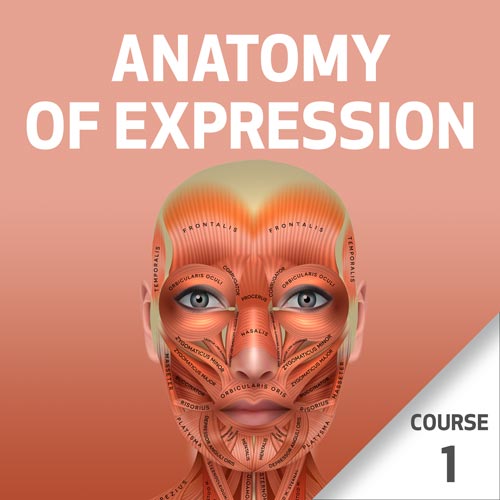




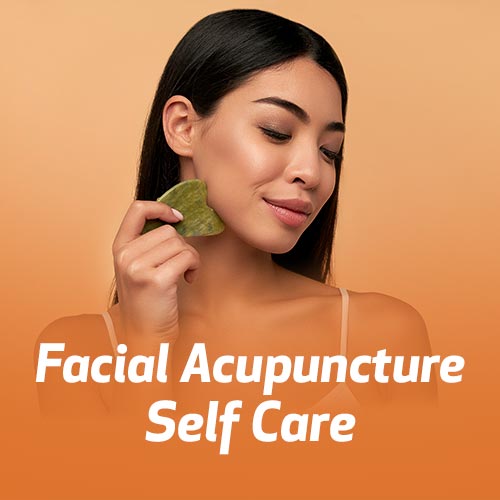

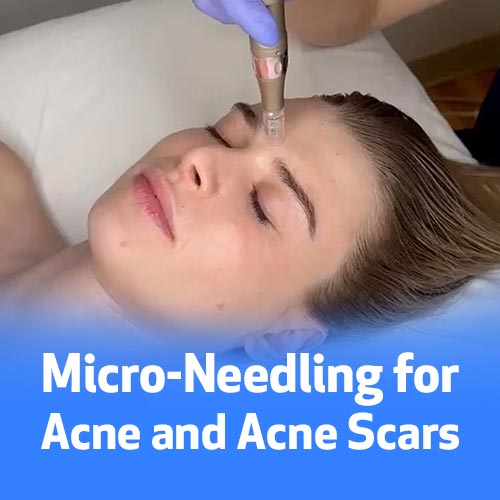

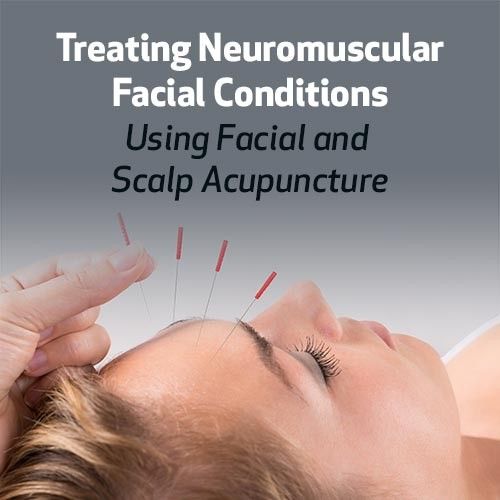

Overview
Delve into the world of our emotions, expressions, and how they manifest on a body/mind/spirit level to shape the landscape of our face. We will look at the relationship between our facial expressions and the relationship to the Zang/Fu. treatment modalities will be taught.
This webinar includes 3.25 hours of instruction that will cover:
(1) Facial anatomy
(2) Muscles involved in facial expression
(3) The connection between our emotions, expression/repression and health
(4) Treatment
Learning Objectives
- Learn the internal/ external manifestations of emotions
- Learn which points can be used to treat the muscles
- Learn facial muscular anatomy
Your Teacher

Michelle Gellis
Michelle Gellis is a Licensed and Board Certified Acupuncture Physician. She has been a Faculty Member and Clinic Supervisor at the Maryland University of Integrative Health since 2004. Ms Gellis holds the distinction of being one of the very few acupuncturists in the US certified to teach Facial Acupuncture certification classes on an international level to other acupuncturists.
Categories
Tags
Overview
This webinar is part two of a 2-part class which ties in the anatomy of the face and the connections between the emotions, facial expressions and the channels. It covers the spirit of the points from a five element perspective and why clearing energetic blocks is important to treatments. This class will provide a deeper understanding of the connection between the facial expressions and the health of our body. Chinese face reading is taught by Dr. Cameron Bishop. The knowledge gained will enhance the students ability to design effective treatments.
Learning Objectives
- Learn treatment protocols.
- Learn an overview of chinese face reading.
- Recognize and learn protocols to treat energetic blocks.
- Learn spirit of the points on the face.
Your Teachers

Michelle Gellis
Michelle Gellis is a Licensed and Board Certified Acupuncture Physician. She has been a Faculty Member and Clinic Supervisor at the Maryland University of Integrative Health since 2004. Ms Gellis holds the distinction of being one of the very few acupuncturists in the US certified to teach Facial Acupuncture certification classes on an international level to other acupuncturists.

Cameron Bishop
Dr Cameron Bishop lived, worked and studied in Japan for four years. He specializes in Japanese Meridian therapy, Women's Health and Pain Management. He has been practicing over 25 years in South Florida. He has extensive teaching and clinical experience.
Category
Tags
Facial Acupuncture Self Care
Self-care Facial Acupuncture, Cupping, Gua Sha & microneedling for acupuncturists
with Michelle Gellis
See In StoreOverview
This course provides an in-depth tutorial on facial acupuncture, facial cupping, facial Gua Sha and micro needling that acupuncturists can implement in their own self-care. Diagnosis, contraindications, and protocols are the main focus of the class with additional skincare and lifestyle tips. Michelle Gellis, Acupuncture physician utilizes her 20 years of clinical and personal experience to guide the practitioner through treatment planning, execution and aftercare.
Learning Objectives
- Understand protocols for facial cupping self-care
- Understand protocols for facial gua sha self-care
- Understand protocols for facial acupuncture self-care
- Understand protocols for microneedling
Your Teacher

Michelle Gellis
Michelle Gellis is a Licensed and Board Certified Acupuncture Physician. She has been a Faculty Member and Clinic Supervisor at the Maryland University of Integrative Health since 2004. Ms Gellis holds the distinction of being one of the very few acupuncturists in the US certified to teach Facial Acupuncture certification classes on an international level to other acupuncturists.
Categories
Tags
Overview
Discover how to safely and effectively use Micro-Needling to treat acne and acne scars in this detailed and engaging course designed specifically for acupuncturists. This class provides a deep dive into the science and application of micro-needling, focusing on its benefits for improving skin texture, reducing acne scars, and supporting overall skin health.
You’ll learn about the anatomy and physiology of the skin, how Micro-Needling stimulates collagen production, and the role of Traditional Chinese Medicine in enhancing outcomes. Through step-by-step instruction, this course covers essential safety protocols, contraindications, needle depth guidelines, tailored for treating acne and scarring.
Whether you’re new to Micro-Needling or looking to refine your skills, this class provides the tools and knowledge you need to integrate this highly effective treatment into your practice. Equip yourself to meet patient demand and deliver transformative results while maintaining the highest standards of care. Earn CEUs and expand your expertise with this dynamic and practical course.
Learning Objectives
- Understand the anatomy and physiology of the skin and the mechanisms by which Micro-Needling stimulates collagen production and improves skin texture.
- Integrate Micro-Needling with Traditional Chinese Medicine principles to enhance patient outcomes holistically.
- Be able to identify contraindications, implement safety protocols, and troubleshoot common challenges in Micro-Needling treatments.
- Learn how to safely and effectively perform Micro-Needling treatments for acne and acne scars, including proper needle depth and protocols.
Your Teacher

Michelle Gellis
Michelle Gellis is a Licensed and Board Certified Acupuncture Physician. She has been a Faculty Member and Clinic Supervisor at the Maryland University of Integrative Health since 2004. Ms Gellis holds the distinction of being one of the very few acupuncturists in the US certified to teach Facial Acupuncture certification classes on an international level to other acupuncturists.
Categories
Tags
Treating Neuromuscular Facial Conditions
Using Facial and Scalp Acupuncture
with Michelle Gellis
See In StoreOverview
This course provides needling protocols such as intramuscular needling of the face, scalp acupuncture, facial cupping, auricular points, and motor points.
The knowledge gained in this acupuncture course will be used in the second part of the webinar which covers how to treat various diseases and disorders which affect the proper functioning of facial muscles and nerve such as Bell's Palsy, Ptosis, Shingles, TMJ, Stroke, Trigeminal Neuralgia, MS and others. It also provides assessment tools and needling protocols to treat various diseases and disorders which affect the proper functioning of facial muscles and nerves such as: Bell's Palsy, Ptosis, Shingles, TMJ, Stroke, Trigeminal Neuralgia, MS and others.
The second half focuses on diagnosis and treatment. The student will learn to Identify different TCM patterns, which affect the facial muscles and nerves.
Learn which modality is best suited to treat different conditions affecting the face. Learn how to effectively plan treatments for various conditions affecting the face.
Learning Objectives
- Learn how to assess and diagnose neuromuscular facial conditions.
- Be able to identify which modality is best suited to treat different conditions affecting the face, including screening for contraindications.
- Learn facial motor points
- Learn facial cupping
- Perform treatment planning for neuromuscular facial conditions.
- Learn Intramuscular needling of the face
- Learn scalp acupuncture
Your Teacher

Michelle Gellis
Michelle Gellis is a Licensed and Board Certified Acupuncture Physician. She has been a Faculty Member and Clinic Supervisor at the Maryland University of Integrative Health since 2004. Ms Gellis holds the distinction of being one of the very few acupuncturists in the US certified to teach Facial Acupuncture certification classes on an international level to other acupuncturists.

